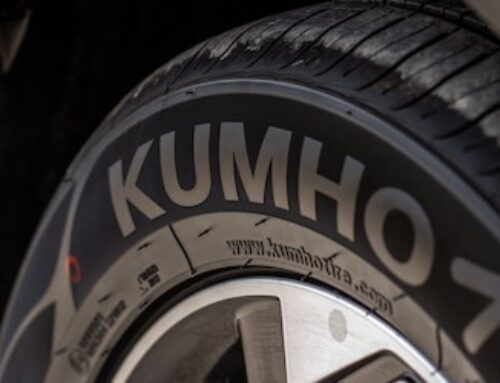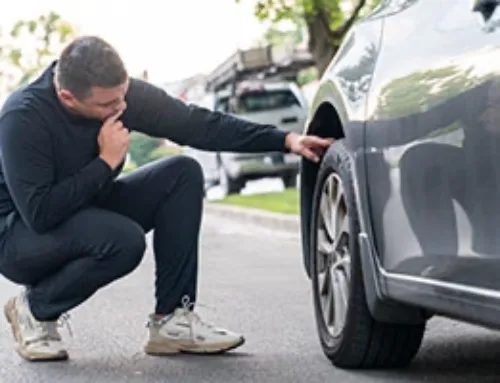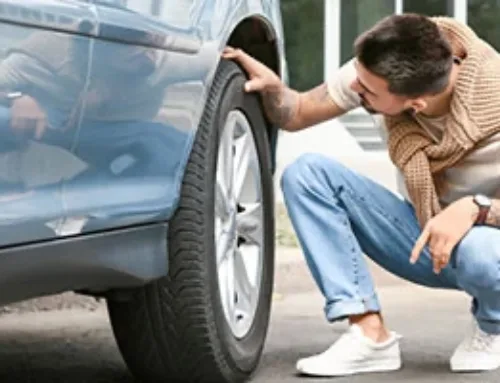Table of Contents
- How to check vehicle tire pressure with a tire pressure gauge?
- How to inflate car tires at a gas station?
- You can use air pumps for free
- How do I know what my tire pressure should be?
- How often should I check tire pressure?
- Temperature’s effect on air pressure
- How do I know when my tires need more air?
- What do I do if my tires have too much air?
- Why it’s important to check tire pressure regularly?
- It may be of immediate help
- When you can’t fill your tires
- Frequently Asked Questions
Have you noticed your tires sagging recently? Or maybe your TPMS light has come on in the past few days? Fortunately, filling your tires at a gas station air pump is one of the simplest car maintenance tasks you can do without special tools. Check out this article to ensure you know all the tricks! And have a safe ride!
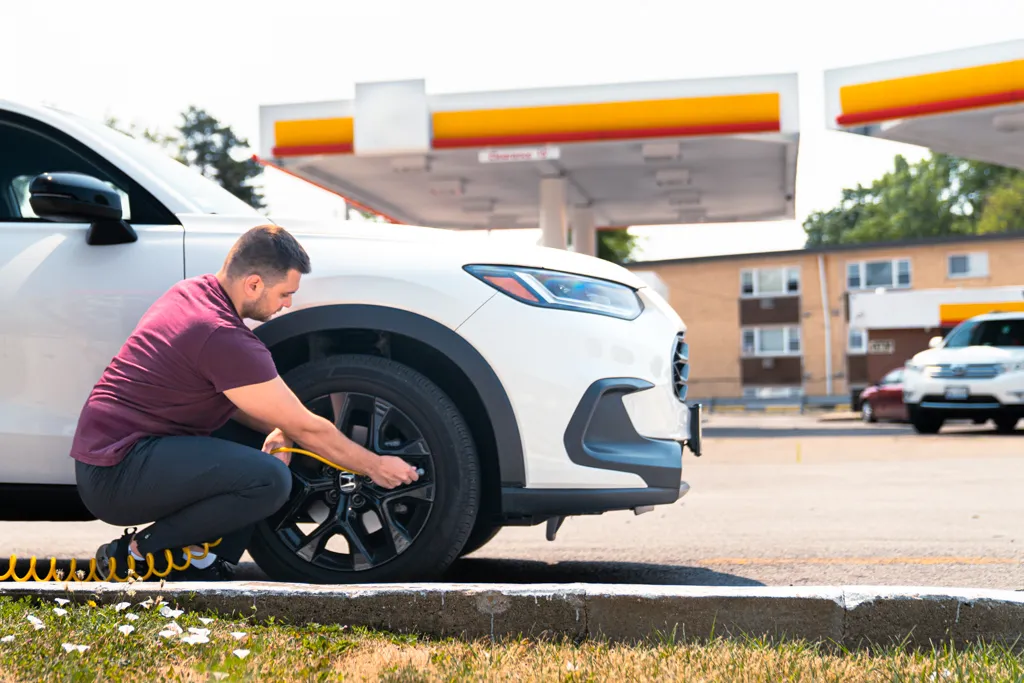
How to check vehicle tire pressure with a tire pressure gauge?
There are several ways to check your vehicle’s tire pressure, but investing in a tire pressure gauge is best. This small device only costs a few dollars and will accurately read your tire pressure.
Remove the valve stem caps and insert the tire gauge over the tire’s valve stem. The pressure will force a small meter out of the backside of the tire gauge, and you will be able to read the tire pressure. You might need to press the tire gauge to the valve stem a few times to ensure you get a proper fit and the correct reading.
How to inflate car tires at a gas station?
Proper tire pressure is a quintessential part of your car’s maintenance. Correct tire pressure improves the life of your tires, fuel efficiency and will improve your vehicle’s handling and safety. Let’s double-check that you remember how to fill your tires at a gas station!
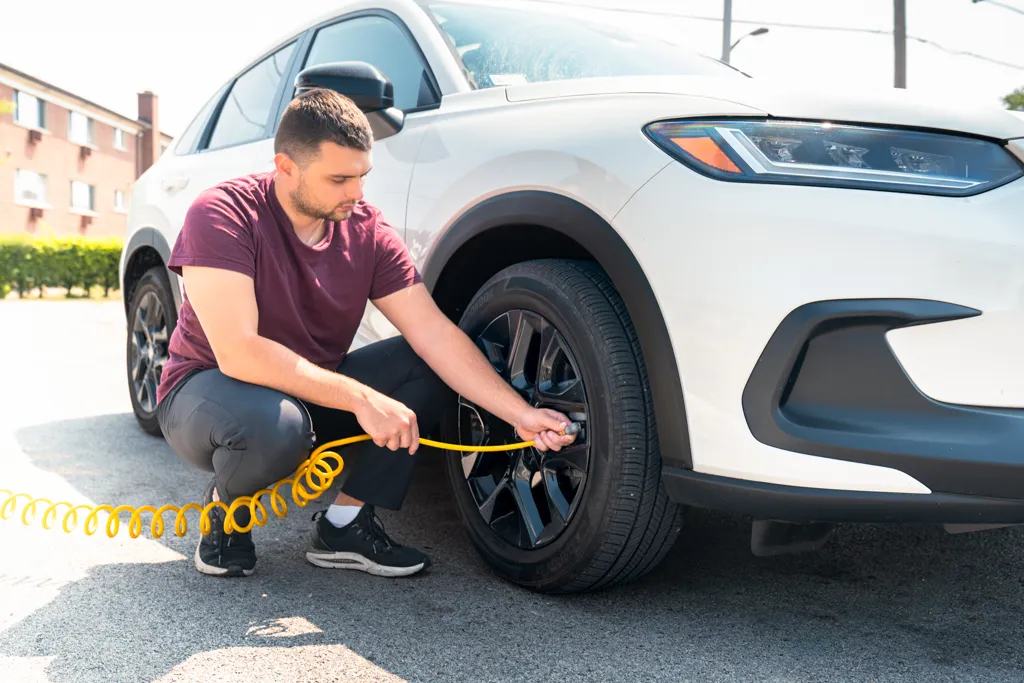
Step 1
Your first step should be to locate the air pump at your local gas station. Most gas stations will have an air compressor in the back or off to the side. You can ask the gas station attendant if you can not find it.
Step 2
Pull up fairly close to the air pump. The air hose should be able to reach the tire or tires that you are trying to fill. Leave enough space to stand in front of the air pump dashboard.
Step 3
If you know the correct pressure, you can enter this number directly onto the display screen at the air pump. If you’re unsure what the air pressure should be, check it on the tire’s sidewall.
Step 4
Locate your tire’s valve stem. The valve stem is a short black cylinder sticking up from the tire and pointing toward the center of the wheel. Once you’ve located the valve stem, remove the valve stem cap. Make sure to keep the valve stem caps somewhere safe, as they tend to disappear.

Step 5
Attach the nozzle of the air hose to the tip of the valve stem. Firmly press the nozzle onto the valve stem so the air flows smoothly into the car tires. At this point, the air pump will take over and begin adding air to your tire automatically. You can hear this happening and usually see the tire lifting up a little bit. It looks a bit like a chubby guy sucking in his gut.
Step 6
The air pump will beep and shut off when it is finished. It has a sensor inside that can read the air pressure. Remove the nozzle carefully so as not to let any of the air leaks out accidentally.
Step 7
Return the air hose neatly when you are finished. Don’t be “That guy”!
You can use air pumps for free
Most air pumps are free at most gas stations. However, even if they are not free, the prices usually range from a quarter all the way to a whole dollar.
How do I know what my tire pressure should be?
You might not know the exact required tire pressure for your car. But it’s super easy to find it!
- Check the tire sidewall. Look for a number, followed by the letters “psi,” for Pounds per Square Inch, which measures air pressure. Typical air pressure for car tires is between 30-35 psi.
- Just open the driver’s door. And look for a sticker on the side of it. You will see the recommended psi for each of the tires.
- Look for the recommended tire air pressure in the car owner’s manual.
How often should I check tire pressure?
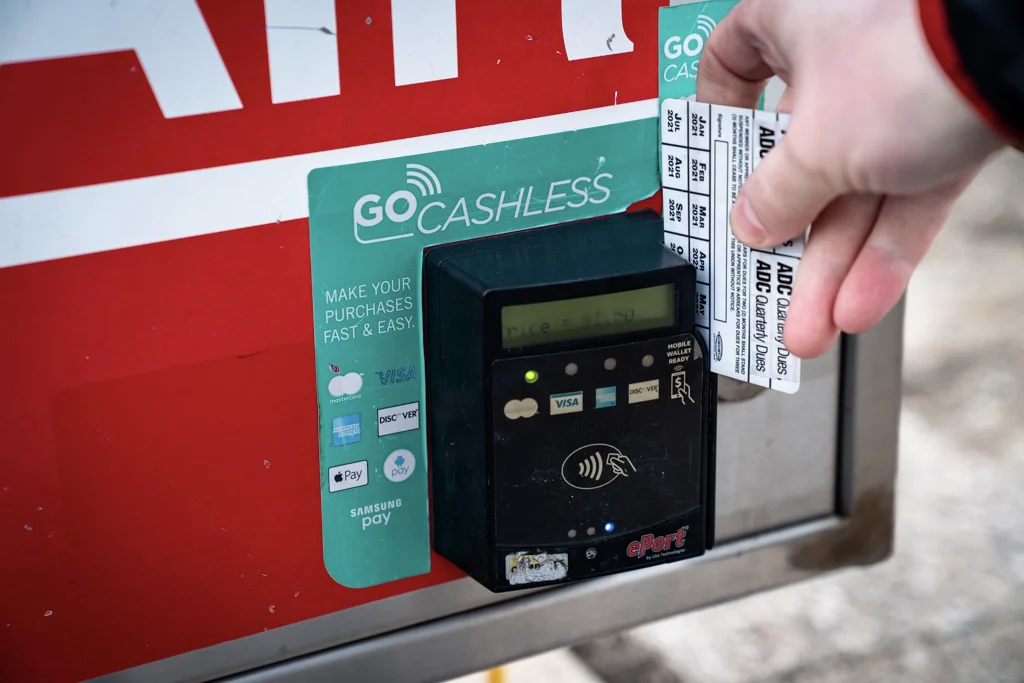
You can check your tire pressure visually every time you get in your car. If one or more of your car tires is under-inflated, it may be obvious just by looking at it. Under-inflated tires will appear to be sagging because the tire pressure is too low.
It’s a good idea to check your tire pressure with a tire pressure gauge once a month or so to be safe. Tires generally lose air pressure slowly over time, even without a leak.
Temperature’s effect on air pressure
Temperature is a big factor in your tire’s air pressure. As temperatures rise, so will the pressure inside your tires. The opposite is true; as temperatures drop, you will notice a similar drop in tire PSI. It’s important to check the air pressure of your car tires in the spring and fall as temperatures change.
Don’t miss the best tire deals & tips!
Sign up for our newsletter
How do I know when my tires need more air?
- Your TPMS (Tire Pressure Monitoring System) light on your dashboard lights up. This is a sensor in each of your wheels to monitor the air pressure. If you see it go on, this clearly indicates that one or more of your tires needs air.`
- You check your tire pressure with a tire gauge. Check this a few times, as it’s not always easy to get a proper seal on your tire’s valve stem.
- You can see visually that your tire is low. The tire will have a bit of a belly on the underside. This is not to be confused with a tire bulge, which looks like an egg or ball was inserted under the tire’s skin and will remain in a set place on the tire and not always appear on the bottom.
What do I do if my tires have too much air?
If your tires are over-inflated, don’t panic; letting some air out is even easier. Simply remove the valve stem cap on the offending tire and press the little knob (the “core”) inwards. You’ll hear and feel the air escaping. The air escapes quickly, so only press it in for a second or two before checking your tire pressure with a tire gauge again. Repeat until you have the proper tire pressure.
Why it’s important to check tire pressure regularly?
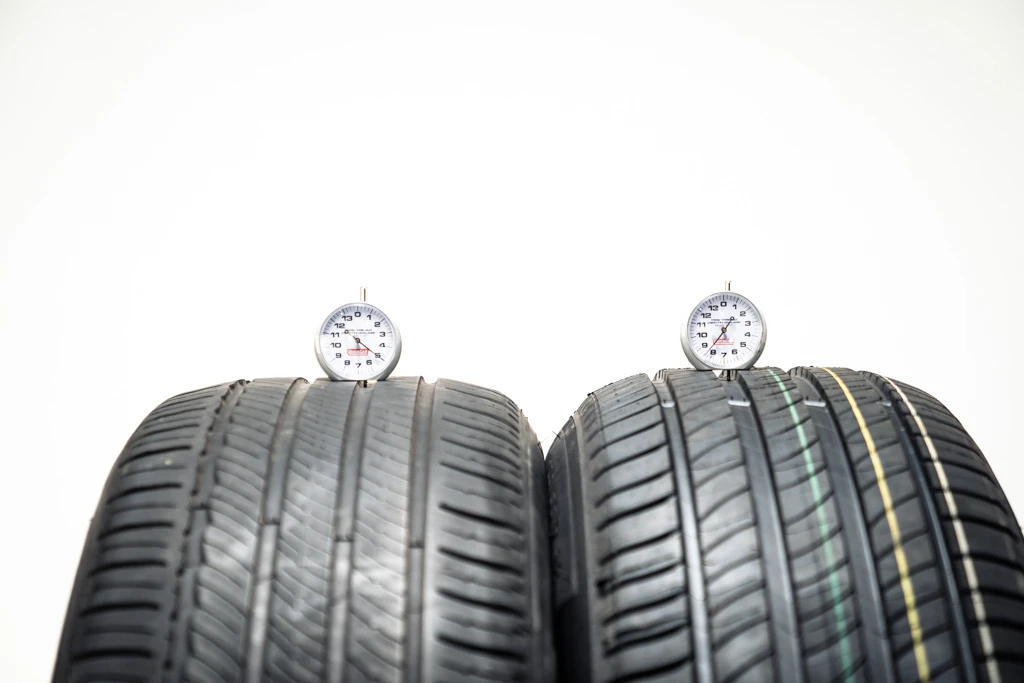
Maintaining proper tire pressure is important for your safety and overall car performance. If your tires have too much air, they will experience uneven wear of the tire treads and need to be replaced sooner. The same is true if your tires have too little air.
Proper tire inflation will improve your car’s handling and safety. It will also improve your gas mileage and extend the life of your tires.
It may be of immediate help
Driving around on under-inflated tires can cause serious damage to your tires. This is because the tire sidewall can become stretched and compressed. This can lead to a blowout or a bulge in your tire, which can be dangerous.
If you notice that your tires need air, then it’s best not to wait. Luckily you can visit nearly any gas station or auto repair shop to get this done quickly and efficiently.
When you can’t fill your tires
If you have a flat tire, filling it up with air may be impossible. This is because it likely has been punctured, and the air will escape. If you try to add air to a flat tire, but it just won’t inflate, this may be a sign of a bigger issue.
If your tire has a bulge on the side, this is also a sign that your tire should not be inflated. A bulge is a sign of internal damage, and the tire must be replaced.
If your tire has a slow leak where it deflates over several days or weeks, even then, it should also be taken in to be checked by a professional. There may be a small leak in the valve stem or a very small puncture somewhere.
Frequently Asked Questions
Do air pumps cost money to use?
Often they are free, but sometimes they cost up to a dollar. Most machines are coin-operated, so come prepared with a few quarters just in case. Once you insert the coins, the air compressor will begin working, running on a timer. If you work reasonably efficiently, each session should be enough time to fill one to two tires.
What should I do if my air pump doesn’t have an interface where I can punch in the desired tire pressure?
This is uncommon but might happen at smaller gas stations in rural areas. If this is the case, you can fill the tire slightly and then stop and check the air pressure with a tire gauge.
Do at-home air compressors work?
This depends entirely on the quality of the machine, but generally, the answer is yes. Some machines are battery-operated, some are plug-in, and some have both options. Filling a tire with air requires a surprising amount of juice, so if you have to rely on the batteries, make sure they are fresh.


